The Power of MT4: Master the Forex Market with These 5 Winning Strategies
Introduction
Welcome to our comprehensive guide on how to unleash the power of MT4 and master the Forex market with five winning strategies. In this article, we will dive deep into understanding the Forex market, getting started with MT4, and exploring the fundamental, technical, price action, risk management, and automated trading strategies that can lead to success in Forex trading.
Understanding the Forex Market
· Definition and Basics
The Forex market, also known as the foreign exchange market, is where participants buy, sell, and exchange currencies. It is the largest and most liquid financial market globally, with an average daily trading volume exceeding $6 trillion. Traders and investors engage in Forex trading to profit from the fluctuation in currency exchange rates.
· Why Choose Forex Trading?
Forex trading offers numerous advantages, making it an attractive option for traders. Some of the key benefits include high liquidity, 24-hour access, leverage options, low transaction costs, and the ability to trade both long and short. Additionally, the Forex market provides opportunities for diversification and the potential for substantial profits.
· Importance of Charting Software
To succeed in the Forex market, having reliable charting software is crucial. It allows traders to analyze price movements, identify trends, and make informed trading decisions. MT4, short for MetaTrader 4, is one of the most respected and widely used charting platforms among Forex traders due to its advanced features and user-friendly interface.
Getting Started with MT4
· What is MT4?
MT4 is a powerful and versatile trading platform that enables traders to analyze the market, place trades, and manage their accounts efficiently. Developed by MetaQuotes, it offers a range of tools, including customizable charts, technical indicators, and expert advisors, empowering traders with the resources they need for successful Forex trading.
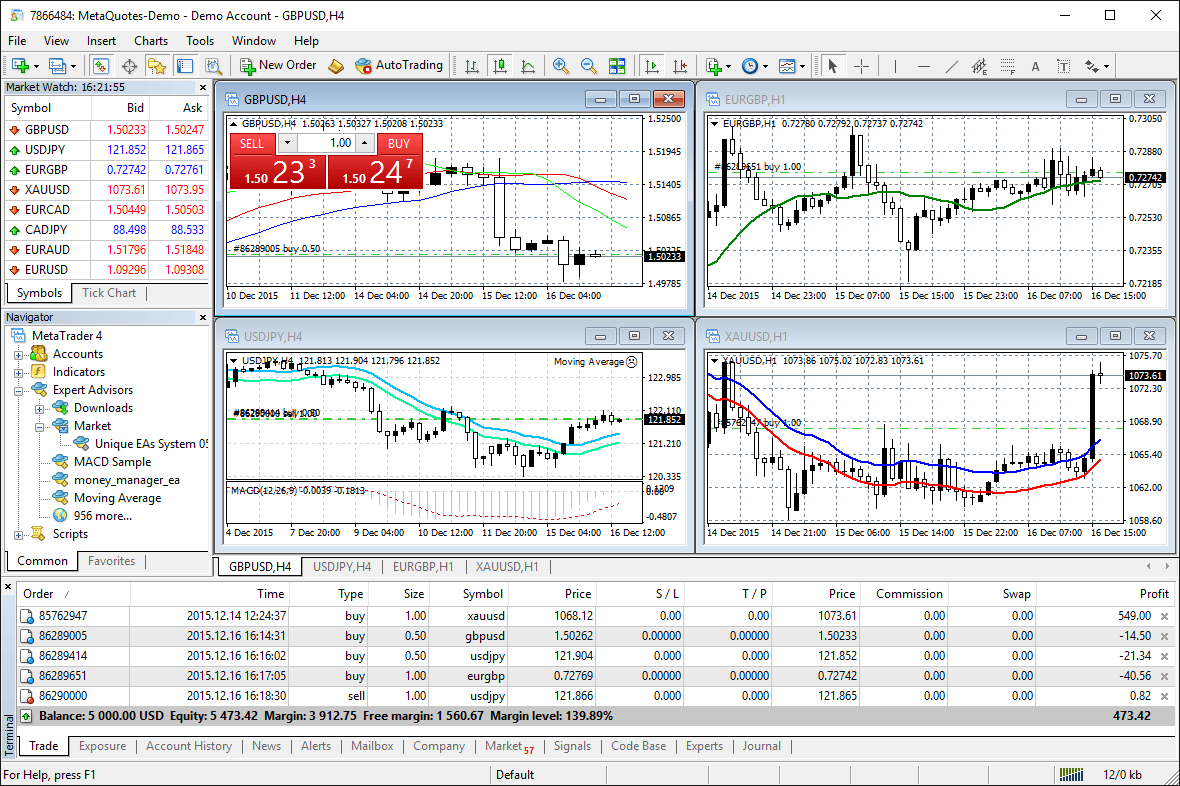
Image of MT4 trading platform
· Benefits of MT4 for Forex Traders
MT4 provides numerous benefits for Forex traders. It offers real-time data, multiple charting options, and thousands of free indicators and expert advisors. The platform is compatible with various devices, including desktops, smartphones, and tablets, ensuring seamless trading experiences across different platforms. Additionally, MT4 allows users to access historical data and engage in automated trading.
· Platform Navigation and Setup Guide
Navigating and setting up MT4 is intuitive and straightforward. Upon launching the platform, traders will find a user-friendly interface with customizable screens and panels. They can easily access quotes, charts, trade execution, and account information through the main menu. Users can further enhance their trading experience by customizing chart settings, adding indicators, and personalizing layout preferences.
Winning Strategy 1: Fundamental Analysis
1. Introduction to Fundamental Analysis
Fundamental analysis is an approach that focuses on evaluating economic, political, and social factors that impact currency prices. It involves analyzing economic indicators, news releases, and market sentiment to predict future price movements accurately.
· Economic Indicators and News
Economic indicators, such as GDP reports, employment data, and inflation rates, provide valuable insights into a country's economic health. News releases, including central bank announcements and geopolitical events, also influence currency values.
· Market Sentiment Analysis
Market sentiment analysis involves assessing the overall mood of traders and investors regarding a particular currency or market. Positive sentiment may drive a currency's value up, while negative sentiment can lead to downward pressure.
2. Identifying Key Economic Events
Successful fundamental analysis requires identifying and understanding key economic events that significantly impact currency markets.
· GDP Reports
Gross Domestic Product (GDP) reports offer a comprehensive overview of a country's economic performance. An increase in GDP indicates economic growth, potentially strengthening the associated currency. On the other hand, a decrease in GDP may weaken the currency.
· Central Bank Announcements
Central banks play a crucial role in influencing currency values through interest rate decisions and monetary policy changes. Traders need to closely monitor central bank announcements for signals of potential market shifts.
· Geopolitical Events
Geopolitical events, such as elections, geopolitical tensions, and trade disputes, can significantly impact currency values. Traders should stay informed about such events and understand their potential effects on the Forex market.
3. Interpreting Market Reactions
Once an economic event or news release occurs, traders need to interpret the market reactions correctly to capitalize on trading opportunities.
· Impact on Currency Pairs
Different economic events have varying impacts on currency pairs. Some events may have a direct and immediate impact, while others may have a delayed or indirect effect. Traders should understand these dynamics to make informed trading decisions.
· Strategies for Capitalizing on Press Releases
Traders can use various strategies, such as trading the news, to take advantage of market reactions to press releases. These strategies involve identifying market expectations, monitoring price movements, and executing trades based on the anticipated outcomes.
Winning Strategy 2: Technical Analysis
1. Introduction to Technical Analysis
Technical analysis involves studying historical price and volume data to predict future price movements. It relies on the assumption that price patterns repeat and that market psychology is reflected in these patterns.
· Key Principles and Concepts
Technical analysis is based on several key principles and concepts, such as support and resistance levels, trendlines, and chart patterns. Understanding these principles is essential for effective technical analysis.
· Popular Technical Indicators
Technical indicators, such as Moving Averages, Relative Strength Index (RSI), and Bollinger Bands, provide valuable insights into market trends, momentum, and potential reversals. Traders can utilize these indicators to confirm their analysis and make more informed trading decisions.
2. Identifying Trends and Patterns
A fundamental aspect of technical analysis is identifying trends and patterns that can signal potential price movements.
· Support and Resistance Levels
Support and resistance levels are price levels where buying or selling pressure is expected to be significant. Identifying these levels can help traders predict market reversals or breakouts and determine optimal entry and exit points.
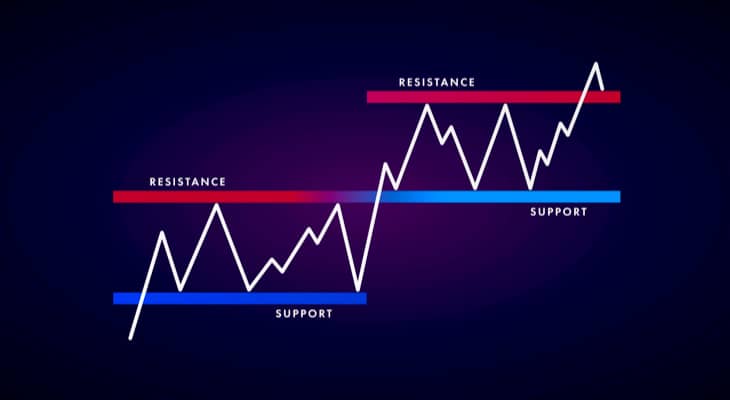
Image of support and Resistance
· Moving Averages and Trendlines
Moving averages and trendlines are essential tools used to smooth out price data and identify market trends. Traders often rely on moving averages to confirm market direction and identify potential entry signals.
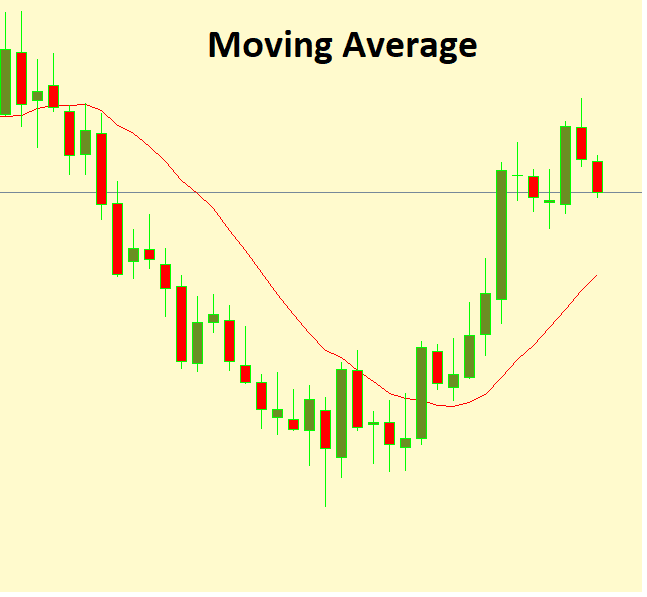
Images of Moving Averages
· Chart Patterns (Triangles, Head and Shoulders, etc.)
Chart patterns, such as triangles, head and shoulders, and double tops or bottoms, provide visual representations of market sentiment and potential price reversals. Traders can use these patterns to anticipate future price movements and plan their trading strategies accordingly.
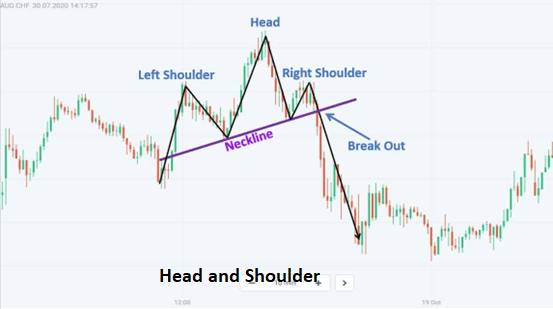
Image of chart pattern
3. Using MT4 Tools for Technical Analysis
MT4 offers a wide range of tools and features that facilitate technical analysis and enhance trading decisions.
· Custom Indicators and Templates
Traders can access thousands of custom indicators and templates within MT4, allowing them to tailor their charts and analysis to their specific trading strategies and preferences.
· Backtesting Strategies
MT4 also enables traders to backtest their strategies by applying them to historical price data. This feature helps traders assess the potential effectiveness of their strategies before risking real capital.
Winning Strategy 3: Price Action Trading
1. What is Price Action Trading?
Price action trading involves analyzing price movements and patterns solely based on candlestick charts, without relying on indicators or other technical tools. It emphasizes the interpretation of price movement and market psychology.
· Candlestick Patterns
Candlestick patterns, such as doji, engulfing, and hammer, provide insights into market sentiment and potential reversals. Traders can interpret these patterns to make informed trading decisions.
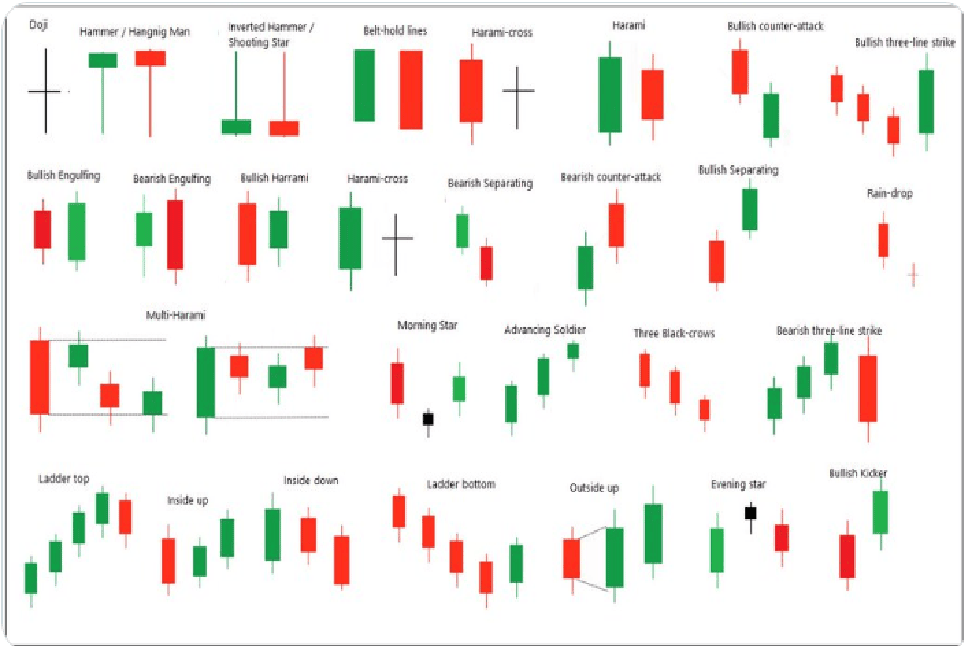
Image of candlestick pattern
· Price Action Strategies (Pin Bars, Inside Bars, etc.)
Price action strategies, such as pin bars, inside bars, and outside bars, offer specific entry and exit signals based on the interpretation of price movements. These strategies help traders identify potential high-probability trading opportunities.
2. Reading and Analyzing Candlestick Patterns
To effectively use price action strategies, traders must become proficient in reading and analyzing candlestick patterns.
· Bullish and Bearish Patterns
Bullish candlestick patterns indicate potential upward price movements, while bearish patterns suggest potential downward price movements. Traders use these patterns to anticipate market direction and make timely trading decisions.
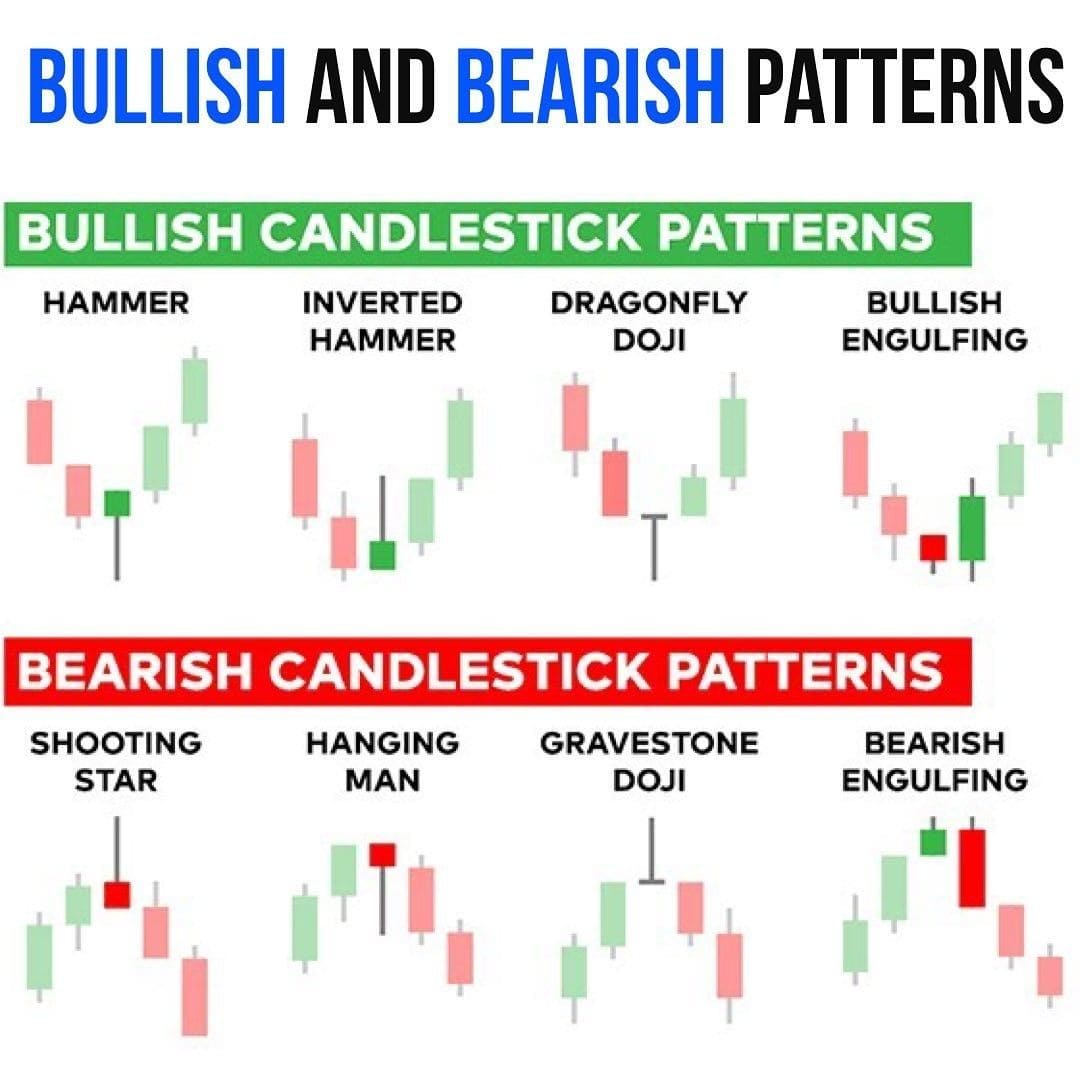
Images of bullish and Bearish patterns
· Reversal Signals and Continuation Patterns
Candlestick patterns can act as reversal signals or signify continuation patterns. Reversal signals indicate potential trend reversals, while continuation patterns suggest that the current trend may continue. Recognizing these patterns helps traders identify optimal entry and exit points.
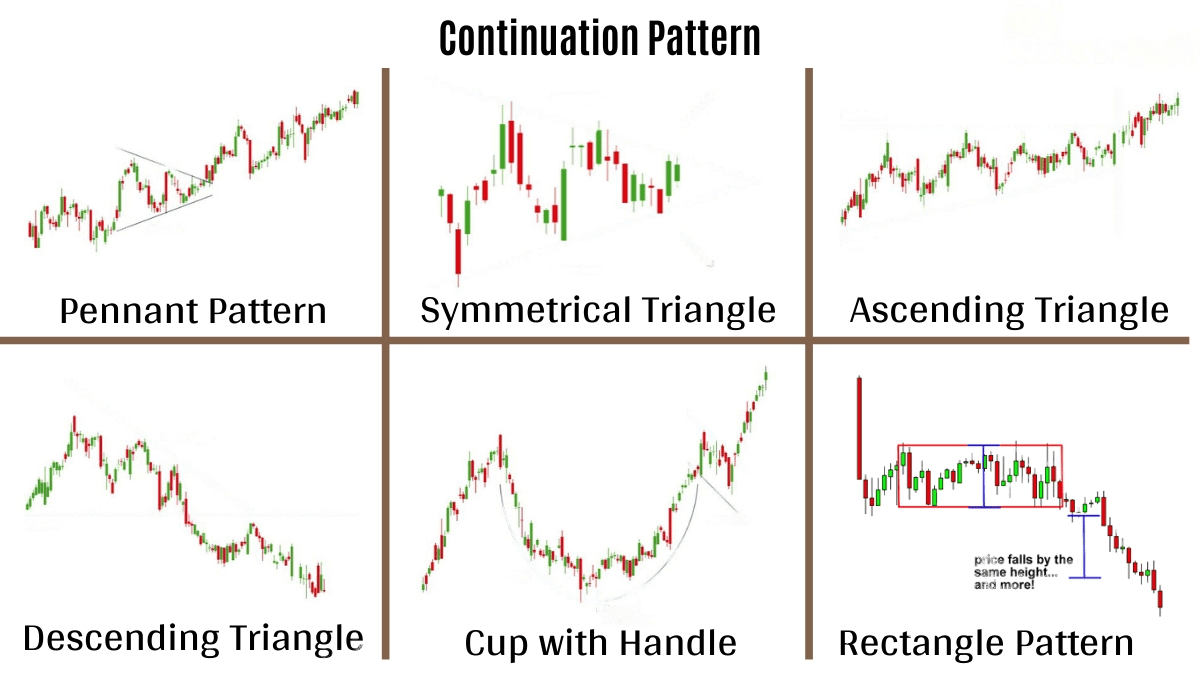
Image of Reversal and continuation pattern
3. Applying Price Action Techniques in MT4
MT4 provides traders with the necessary tools to apply price action techniques to their trading activities.
· Customizing Candlestick Charts
Traders can customize their MT4 charts to display candlestick patterns and apply different color schemes to highlight specific price action signals. This customization allows for better visualization of price movements.
· Identifying Entry and Exit Points
MT4 enables traders to set price alerts and draw trendlines directly on the charts, facilitating the identification of potential entry and exit points based on price action signals. This feature helps traders stay on top of their trading strategies.
Winning Strategy 4: Risk Management
1. Importance of Risk Management in Forex Trading
Effective risk management is crucial for long-term success in Forex trading. It involves implementing strategies to protect capital and minimize potential losses.
· Calculating Risk-Reward Ratio
The risk-reward ratio assesses the potential reward versus the potential risk of a trade. Traders aim to maintain a favorable risk-reward ratio to ensure that potential profits outweigh potential losses.
· Setting Stop Loss and Take Profit Levels
Stop loss and take profit levels are essential tools used to manage risk in Forex trading. These levels determine when traders exit a trade to limit potential losses or secure profits.
2.Using Proper Position Sizing Techniques
Position sizing techniques determine how much capital traders allocate to each trade based on risk tolerance and account size.
· Fixed Lot Sizes vs. Percentage Risk
Traders can choose to use fixed lot sizes or a percentage of their account balance to calculate their position sizes. Both methods have advantages and can be tailored to individual trading preferences.
· Incorporating Risk Management Tools in MT4
MT4 offers various risk management tools, including integrated stop loss and take profit features. Traders can set these levels directly on the platform to automate trade exits and manage risk effectively.
Winning Strategy 5: Automated Trading with Expert Advisors
1. Introduction to Expert Advisors (EAs)
Expert Advisors (EAs) are automated trading systems that execute trades based on predefined rules and algorithms. They help traders eliminate human emotions and biases from their trading decisions.
· Benefits and Limitations
EAs offer numerous benefits, such as increased speed and efficiency in trade execution, the ability to trade 24/7, and the elimination of emotional decision-making. However, they also come with limitations and require proper evaluation and testing.
· Popular EAs in the Market
There are numerous EAs available in the market, offering a range of strategies and trading approaches. Some popular EAs include Forex Diamond, Flex EA, and WallStreet Forex Robot.
2. Choosing and Testing EAs
Selecting the right EA is crucial to the success of automated trading. Traders should consider factors such as strategy, performance metrics, and risk management features when evaluating EAs.
· Evaluating Performance Metrics
Traders should analyze performance metrics, such as profitability, drawdown, and risk-reward ratio, to assess the effectiveness of an EA. Historical performance alone should not be the sole determinant of an EA's potential.
· Back-testing and Forward Testing EAs in MT4
MT4 allows traders to back-test EAs using historical data to evaluate their performance under various market conditions. Forward testing, which involves running EAs in real-time demo accounts, can further validate their effectiveness.
3. Optimizing and Fine-tuning EAs
To enhance the performance of an EA, traders can customize parameters, modify trading rules, and adjust risk management settings.
· Customizing Parameters and Settings
Each EA has specific parameters and settings that traders can adjust to better align with their trading strategies and risk preferences. Optimization aims to find parameter combinations that yield optimal results.
· Monitoring and Adjusting EA Performance
It is crucial to continuously monitor and assess the performance of an EA after it is deployed. Traders should make necessary adjustments when market conditions change to ensure the EA remains effective.
Summary
In summary, mastering the Forex market requires a deep understanding of market dynamics and the utilization of effective trading strategies. By leveraging the power of MT4, traders can implement fundamental analysis, technical analysis, price action techniques, risk management, and automated trading strategies to enhance their trading performance. Constant learning, adaptation, and integration of these strategies are essential elements for successful trading in the Forex market.
Frequently Asked Questions (FAQs)
Below are some frequently asked questions related to Forex trading and the strategies discussed in this article:
A. What is the ideal starting capital for Forex trading?
The ideal starting capital for Forex trading depends on individual risk tolerance and trading goals. However, it is generally recommended to start with a sufficient amount to withstand potential losses and allow for proper risk management. Many traders start with a minimum of $1,000 to $5,000.
B. Can I apply these strategies to any currency pair?
Yes, the strategies discussed in this article can be applied to any currency pair. However, it is important to consider the specific characteristics and behavior of each currency pair when implementing the strategies.
C. How long does it take to master Forex trading with these strategies?
The time required to master Forex trading with these strategies varies from individual to individual. It depends on factors such as prior trading experience, learning ability, and dedication to continuous learning and practice. Generally, it takes several months to years to become consistently profitable in Forex trading.
D. Are there any risks involved in automated trading using EAs?
Yes, there are risks involved in automated trading using EAs. EAs are programmed based on historical data and predefined rules, which may not always perform optimally under changing market conditions. Traders should regularly monitor and adjust EAs to ensure their effectiveness and mitigate potential risks.











Discussion